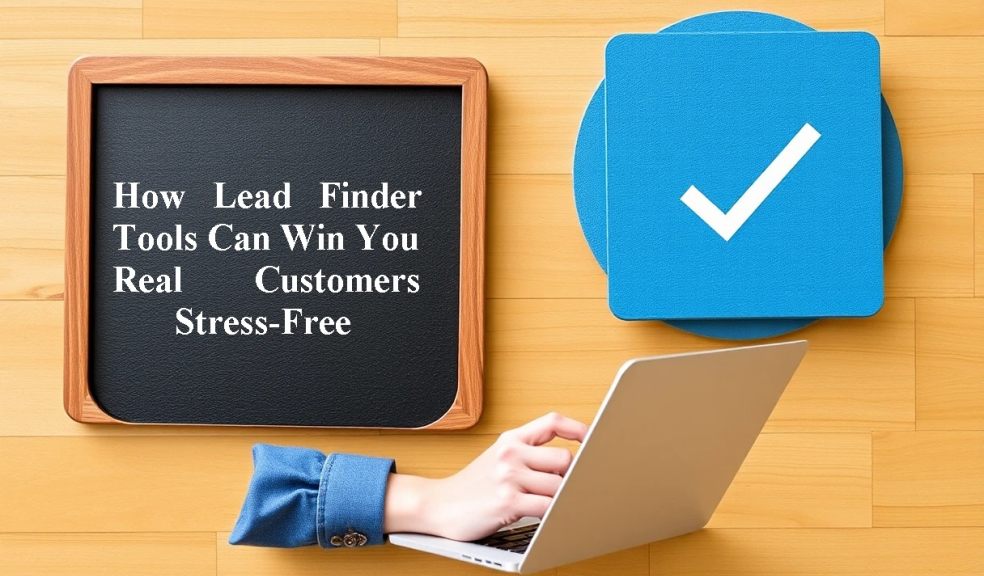
How Lead Finder Tools Can Win You Real Customers Stress-Free
Let’s be real. Finding new customers? Not fun. It’s time-consuming, messy, and most of the time, you’re just guessing. You shoot out a few emails, stalk a few LinkedIn profiles, maybe cold call someone who does not want to talk to you, and then wait.
But here’s the thing: there’s a better way. Lead finder tools aren’t magic, but they do save you from wasting hours chasing ghosts. They help you spend your time on people who might be interested in what you’re selling. And that’s a huge win.
So, what’s a Lead Finder?
It’s a bloodhound for sale. You tell a Lead Finder like Mailgo what kind of people you’re trying to find – business owners, marketing managers, people who run cafes, whatever – and it goes off sniffing through the internet for contact details. Emails, websites, phone numbers, even social links if you’re lucky. You don’t have to scroll through endless profiles or dig through outdated directories. It’s all there. Ready to go. Think of it as a shortcut past the small talk.
How Does AI Lead Finding Agent Work?
Well, different tools work in different ways, but most of them pull data from public sources; websites, listings, socials, that sort of thing. You set some filters (location, job title, company size, whatever matters to you), and boom – you’ve got a list.
Some tools are basic and just throw you a spreadsheet. Others are a bit more clever and give you scores or tags that show which leads are more likely to bite. And yes, most of them update regularly, so you're not sending an email outreach to someone who quit three years ago.
You still have to do some thinking. It won’t make coffee or close deals for you. But it does get you past that “who do I even talk to?” phase fast.
Why Bother With Lead Finder?
Short version: because your time’s worth more than Googling random businesses for three hours. Longer version? It helps you work smarter. Let’s say you want to launch a campaign next week.
Are you going to manually build a list of 100 restaurant owners in Sydney by Wednesday? Not unless you hate yourself.
A lead finder does the grunt work. You can focus on the message, the offer, the follow-up – all the parts that bring in money. That’s where your effort should go. Not data entry.
Also, you avoid that awkward “Hi, I think you might be interested in…” email that gets deleted in two seconds. Because the tool helps you get specific. You're talking to someone who might genuinely need what you offer.
Pairing Lead Finder With Cold Email Software Tools Like Mailgo
Now, here’s where things get even smoother. You’ve got the leads. Great. Now what? You’re not going to email them one by one, right? That’s where email tools like Mailgo come in. You upload your list, write a few emails (keep it casual; nobody likes stiff sales talk), and set them loose.
These tools send your messages automatically, track who opens what, and can even trigger follow-ups based on who clicks or replies. It’s like having a tiny sales assistant who works 24/7 and doesn’t complain. Lead finders plus a reliable cold email tool equals less sweat, more replies.
Do You Need a Lead Finder?
Let’s be blunt: no one needs a lead finder the same way no one needs a dishwasher. But once you use one, you’ll hate going back. If you’re trying to grow, and you don’t have a ton of inbound traffic, you’ve got two options — hunt down leads manually or get a tool that does it faster and better. Most people choose option B once they try it. Especially if you're a freelancer, consultant, small agency, or anyone without a huge sales team. It’s just a smart move.
What to Look For in a Lead Finder
Not all lead finders are equal. Some are bloated and confusing. Others give you stale info that leads nowhere.
Here’s what to check:
- Fresh data – Old contacts equals bounced emails equals wasted effort.
- Solid filters – So you don’t end up with leads in Iceland when you sell in Perth.
- Easy export options – You want to move your leads into whatever CRM or email tool you’re using.
- Transparent pricing – Watch out for those that charge per lead with zero guarantees on quality.
-
Trial version – Always test first. If it feels clunky, walk away.
And please, if it takes you more than ten minutes to figure out how to use it? That’s a red flag. Ain’t nobody got time for a 40-tab dashboard.
Some Advice Before You Start Using Lead Finder
Know who you're trying to reach. Vague targeting equals weak leads. Be specific. Check the data before you email anyone. One quick scan can save you from emailing someone’s personal Gmail or a long-dead website.
And seriously — don’t send the same template to 300 people. At least change the name and mention something relevant to them. A little effort goes a long way. Also, don’t get greedy. Just because the tool gives you 1000 leads doesn’t mean you should email them all today. Be strategic. Break it into batches, test your message, tweak it, and go again.
Heads-Up: It’s Not All Smooth Sailing
Sometimes the contact info is off. You’ll get bounced emails, outdated websites, maybe a phone number that’s disconnected. It happens. Don't stress. Also, depending on the tool, you might get too many leads and not enough context.
That’s a problem if you’re not sure how to filter them fast. And yes, there are privacy laws. You can’t just blast cold emails to anyone, especially in countries with strict spam rules. Be smart about compliance — it’s worth reading the fine print. Still, none of these issues are deal-breakers. They're just part of the game.
Wrap-Up
Look, no tool will magically fill your inbox with eager buyers. But lead finders get you way closer than guessing does. They save time. They give you focus. And when paired with tools like Mailgo, they help you start real conversations with people who might care.
If you're tired of spinning your wheels, this might be the quiet little upgrade that changes everything. Try one. Test small. Learn fast. You’ll wonder why you didn’t do it sooner.

















